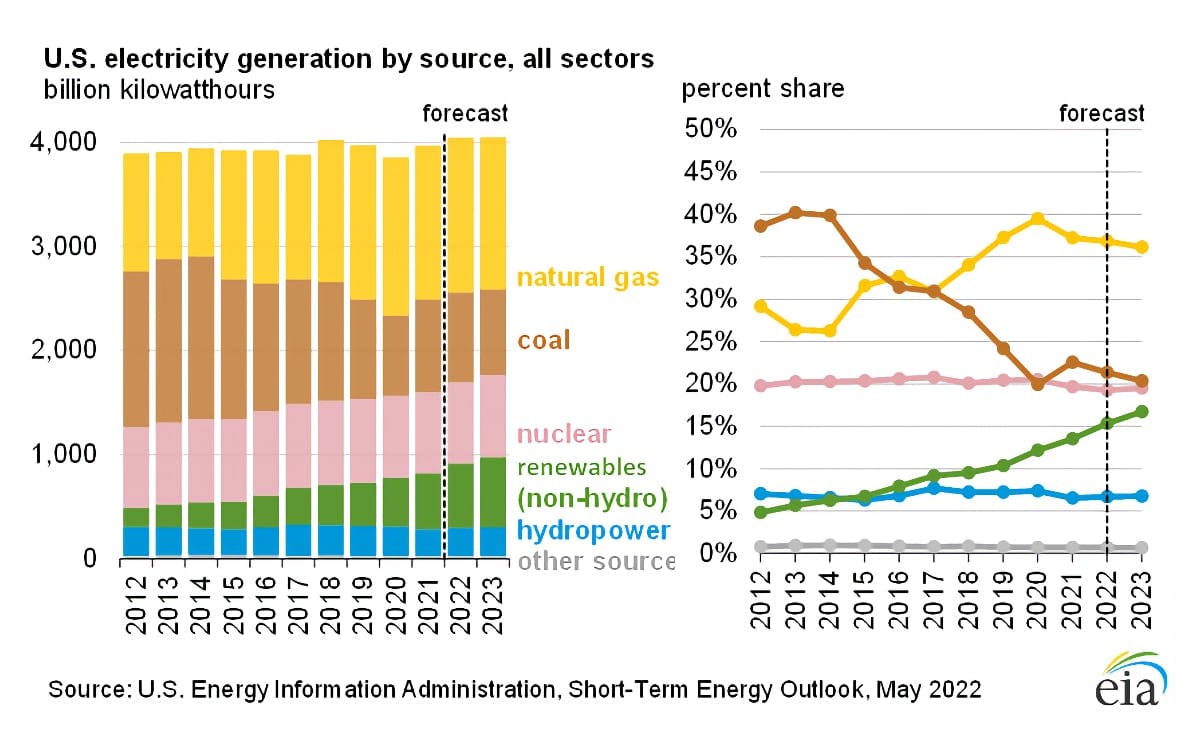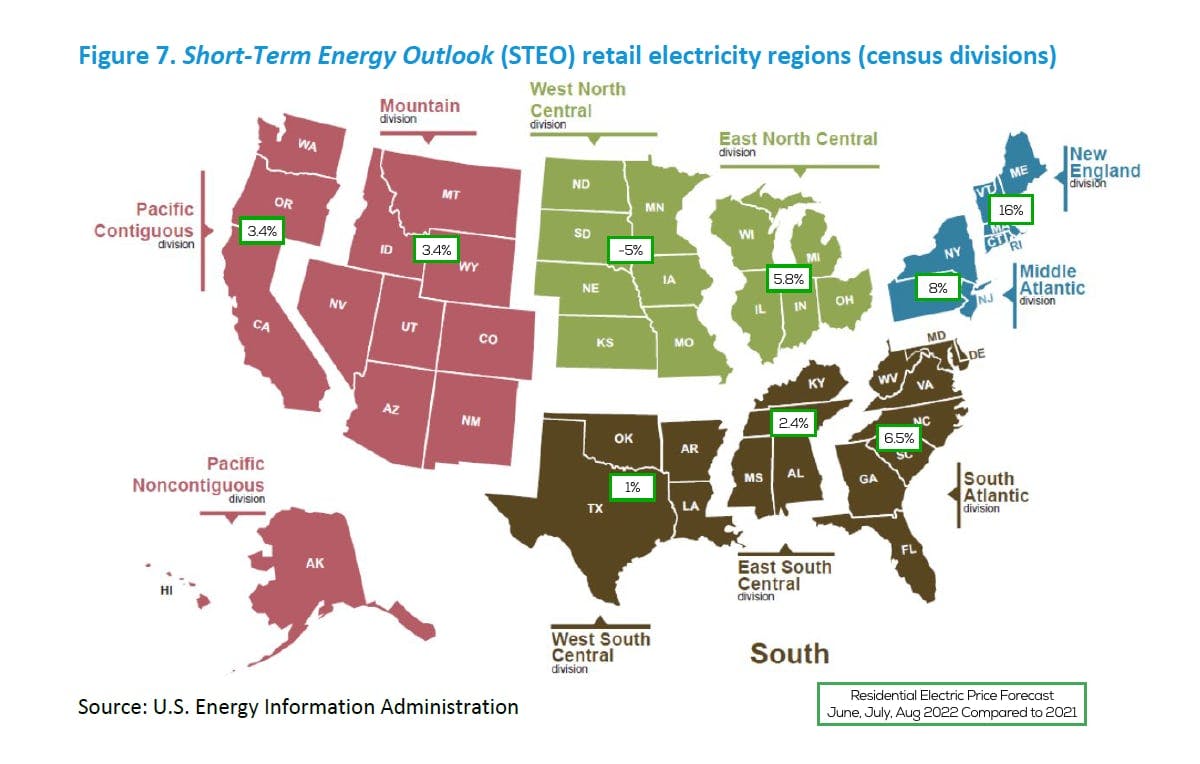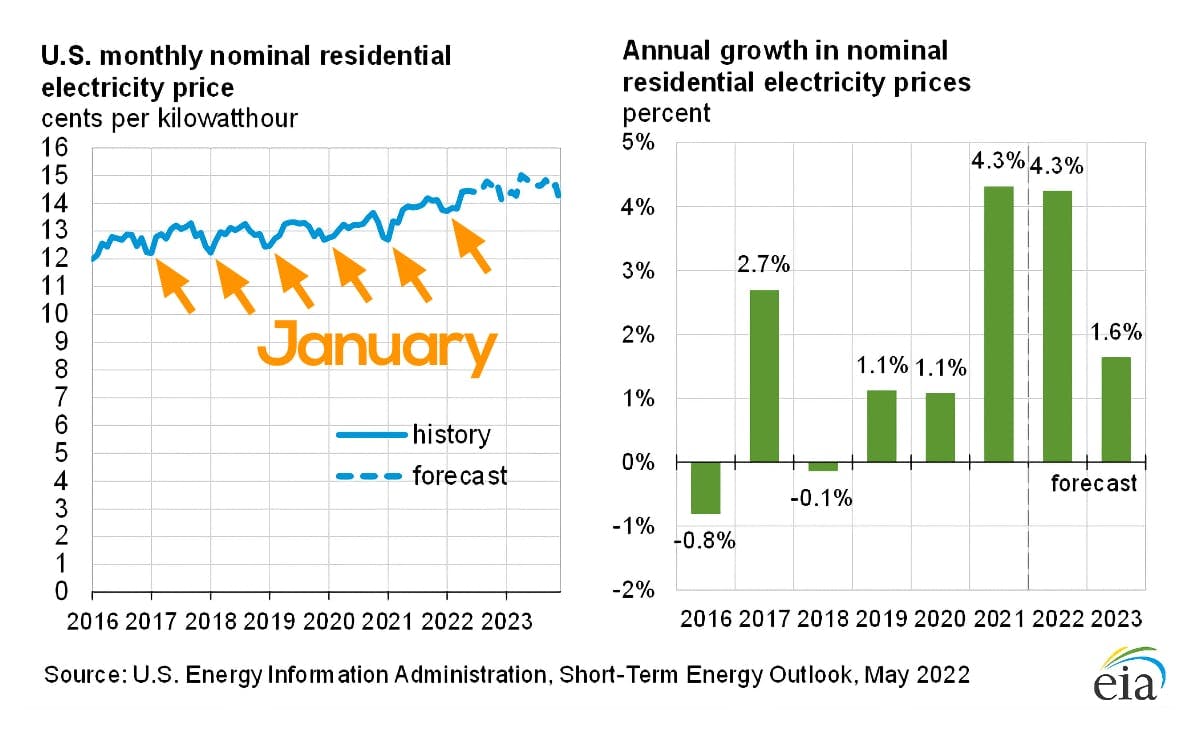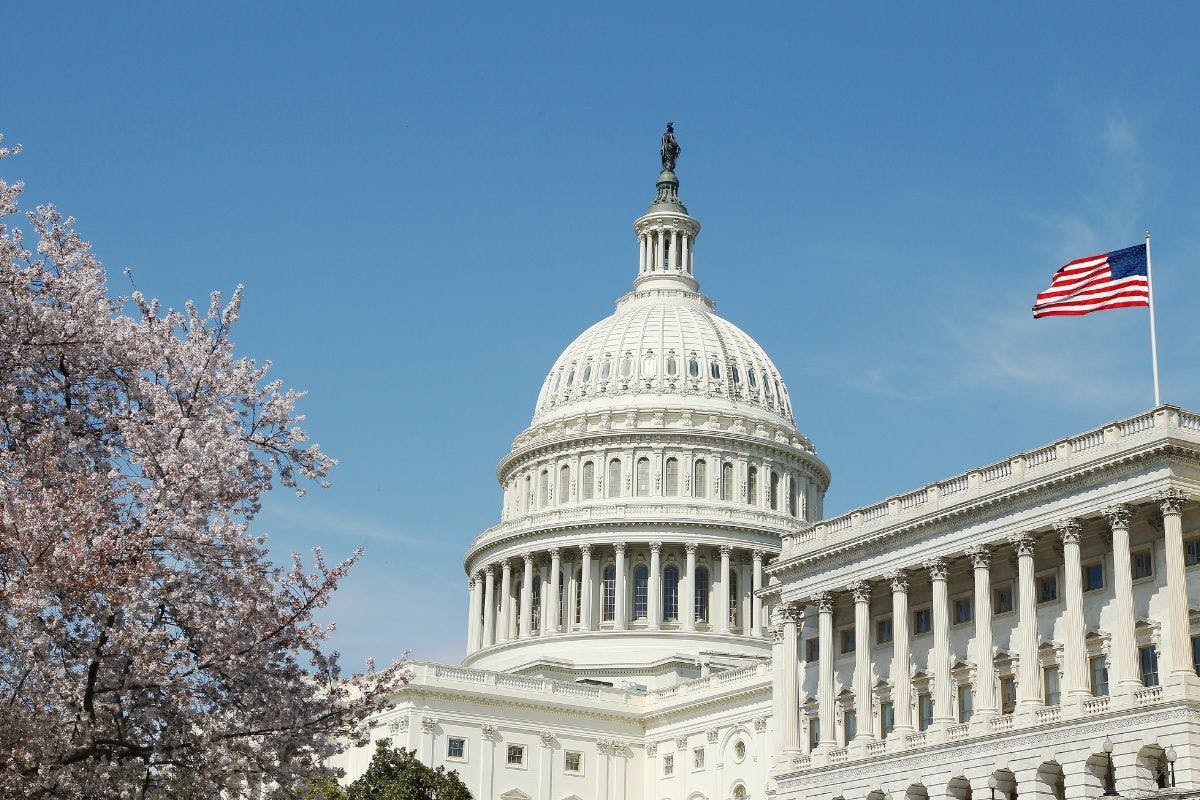Electricity Rate Increases in 2022 and Beyond
Last edited

Author
Cory O'Brien
Senior Director - Growth Marketing

Editor
Ryan Barnett
SVP, Policy & New Market Development
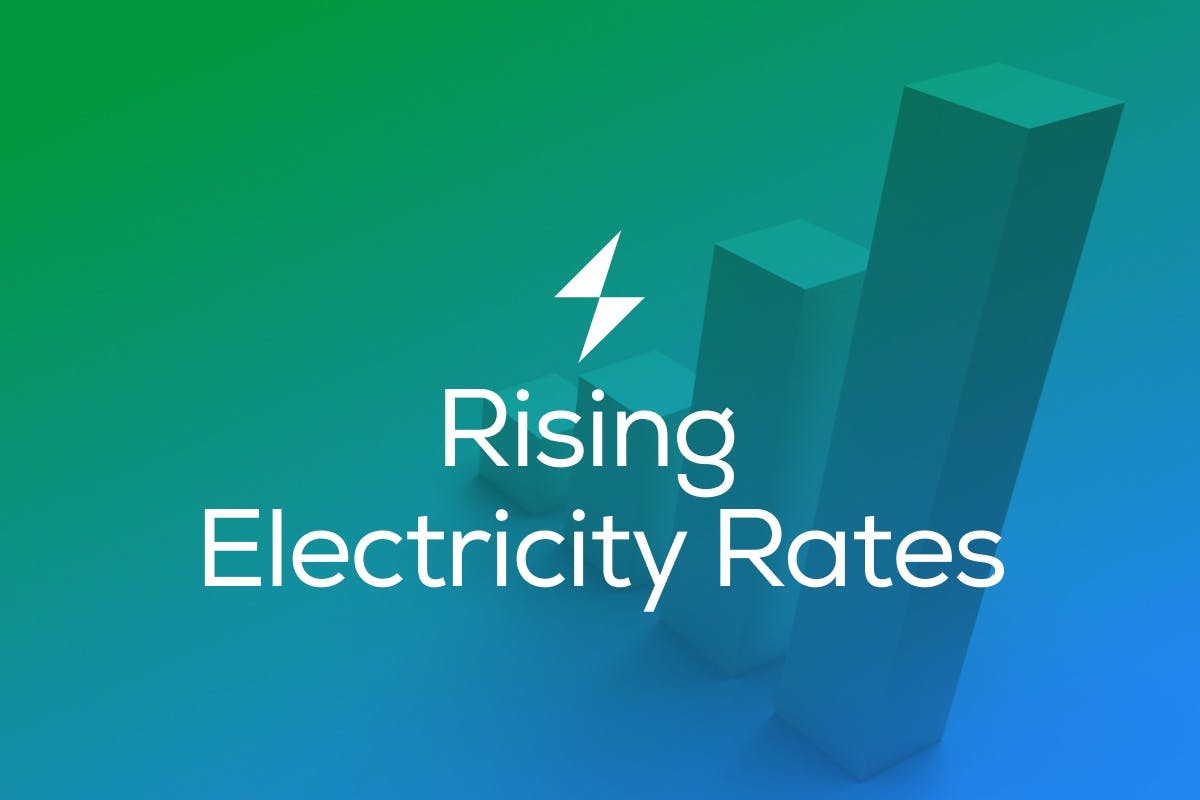
At Palmetto, we believe that going solar is one of the best ways to counteract rising electricity rates and higher utility bills. In 2022, we’re seeing drastic electricity rate increases, and as a result, the benefits of solar power are more obvious than ever before.
When rates increase, consumer demand for installing solar solutions and buying energy efficiency products generally increases as well. In addition, homeowners who already have solar panels on their homes benefit from increased solar savings, and a stronger return on their investment.
This article will help you understand why electric rates are increasing, what’s happened historically with average electricity rates, and how you can expect electricity rates to change as we head into the summer of 2022.
See how much you can save with home energy changes
Why Are 2022 Electricity Rates Increasing?
Several news outlets have recently written about how electric rates have experienced major price increases over the previous 3-6 months. These higher prices can be attributed to the rising demand for natural gas, and they are expected to continue through the summer:
- Why Your Electric Bill Is So High — and Could Keep Climbing (Wall Street Journal)
- Get Ready for Another Energy Price Spike; High Electric Bills; (New York Times)
- Power Prices Jumped 51% In PJM, 85% In New England In Q1 Due To Rising Gas Prices (Utility Dive)
- Pennsylvania Electric Generation Costs Increasing Up To 45% On June 1 (TRIB Live)
- Electricity In Ohio Will Cost More This Summer (The Columbus Dispatch)
Natural gas is the largest source of electricity in the U.S., supplying 37% of total generation. Coal generated 23% of U.S. electricity in 2021, but that number will steadily decline as those power plants are retired. Nuclear energy represents approximately 20% of electric generation, and it’s expected to remain the same, while renewable energy including solar and hydro will continue to rise from their 20% level in 2021.
The primary reason for the increase in electricity rates is that natural gas prices are increasing at a faster rate than in the past several years because the Russian supply to Europe and Asia is lower. Additionally, the demand for U.S. natural gas is higher both abroad and domestically, so prices are increasing as a result of this increase in demand.
Let’s examine the top three reasons for these across-the-board increases in energy costs and rates:
1. Russian Invasion of Ukraine Impacts Supply and Demand of Natural Gas
- Russia is the world’s 2nd largest natural gas producer. (The United States is 1st.)
- Russia is the world’s largest natural gas exporter and holds the most reserves.
- With the war in Ukraine, supply from Russia to Europe and Asia is significantly down.
- European & Asian demand is driving the cost of natural gas much higher.
- Europe’s spot Liquified Natural Gas (LNG) prices this past winter were five times higher than their 5-year average, despite a mild winter.
- Asia’s spot Liquified Natural Gas (LNG) prices this past winter were four times higher than their 5-year average.
- Per the International Energy Administration's Gas Market Report, Q2-2022: “US LNG exports registered a remarkable 50% increase in 2021, and were up by nearly 60% year-over-year in H2, as soaring spot LNG prices pushed US terminals to operate at full capacity in the second half of the year.” Q1 2022 was up 27% y-o-y.
- US storage of natural gas is down 16% compared to the national average over the last 5 years.
- Storage of natural gas in the European Union is down 30%, even though the spring is typically the optimal time to store reserves in preparation for peak summer demand.
2. Increased U.S. Electricity Consumption Boosts Demand
- In 2020, during the pandemic, U.S. retail sales were down 2.5% compared to 2019. While residential sales were higher because people were staying home, commercial and industrial shutdowns impacted that decrease.
- 2021 electricity consumption was up 2% compared to 2020
- The U.S. Energy Information Administration (EIA) projects that electricity sales for summer 2022 will be 0.4% higher.
- Residential consumption is expected to be down due to mild weather forecasts.
- Commercial and industrial sectors are up because of the growing economy.
- If the weather is hotter than forecast, that could significantly increase residential demand, as electric customers use more energy to cool their homes.
- Global consumption is expected to decrease slightly, just below 0%.
- Europe could experience an estimated 6% drop due to the high fuel prices.
- Asia has forecasted a 3% increase.
3. Coal Plant Retirement Creates Supply Constraints
- Coal generation plants are steadily being retired.
- Coal was 40% of electricity generation less than 10 years ago, but just 23% today.
- The EIA projects that planned coal plant closures will continue, despite increasing natural gas prices.
- Natural gas had historically low prices in 2016-2020, coupled with regulatory and environmental policies that discouraged the use of coal.
- This increased demand for natural gas and renewables affects the East Coast wholesale markets more than other regions that rely on coal the most.
See how much you can save with home energy changes
Two-Year Projections for Electricity Prices
Residential electric rates increased sharply by 4.3% in 2021, and are continuing to increase in 2022.
- 4.3% is the highest annual growth rate since 2008.
- The electric rate increase is also in line with 2021’s inflation rate of 4.7%.
- The EIA estimates 4.3% growth in 2022, but a more modest 1.6% in 2023.
Compare these projections with the U.S.’s average annual growth rate of electricity prices, which was 2.4% in the 20 years from 2001 to 2021. (For a total growth rate of 59.9%.)
Thus, we can expect electric rates to continue rising, but we should also remember that the conditions leading to this most recent spike are unique. They are being driven and/or compounded by a fierce drop in supply from Russia to European and Asian markets.
High prices for LNG are forecasted through 2022 by the International Energy Administration, while Europe and the United States fill storage reserves.
That said, it would be prudent to be cautious of EIA’s estimates that natural gas prices, and thus electric rates, will go back to normal in 2023. If Russia continues to hold out its supply of natural gas (or Europe doesn't want that natural gas due to sanctions), these high prices could easily continue in 2023 and beyond.

Summer 2022 Projections for Electricity Prices
For January and February 2022, the EIA reported an average retail price of electricity of 13.78 cents per kWh. While this is about the same as 2021’s average, January and February of this year are up 8% and 3.7%, respectively, compared to the same months last year. From July 2021 to February 2022, electricity prices were 5.5% higher compared to the same months in the prior time frame.
Even with those trends in hand, the EIA only projects a 3.9% increase in average residential electric rates for Summer 2022, compared to Summer 2021. The agency does note that it could be higher if summer temperatures are hotter than forecasted, as demand will be higher than estimated.
However, while the average rate increase may be nominal, regional differences are significant:
- EIA projects a 16% increase in New England, 8% in the Middle Atlantic, and 6.5% in South Atlantic, as they are the most affected by coal plant retirement.
- On the other hand, West South Central is forecasted at only a 1% increase, due to an ample mix of wind and solar capacity.
- The Pacific Contiguous region is projected at a 3.4% increase since its generation mix includes a good portion of hydroelectric, solar, and nuclear.
Be Cautious of Headlines About Electricity Rate Increases
Rate plan structures and historical data reinforce the fact that electric rates in the winter are typically lower than in the summer months. The graph below reflects those winter dips, even as the average annual prices typically rise year-over-year:
News articles about electricity and energy prices can be full of half-truths. Be leery of headlines that use language such as “Electricity Prices Are Increasing 45%”. They are likely comparing winter rates to summer rates, not summer rates to the previous summer rates.
Also, they may only be comparing the wholesale generation portion of the bill, also called supply, fuel, or energy charges. Those numbers can exclude the distribution and fixed charges that typically require formal approval via regulators every 2 to 4 years.
Here are the numbers you should know:
- When comparing 2021 data with 2020 data, the average residential electricity price increased by 4.3%.
- The average residential electricity price is projected to increase another 4.3% in 2022.
Note: When calculating your expected electricity rate increase, Palmetto uses customized percentages that are based on historical averages per utility, which gives you a more accurate comparison of future costs.
Avoid Electricity Rate Increases By Going Solar
By locking in a fixed rate for your electricity, going solar is one of the best ways to counteract unexpected increases in electricity rates and larger energy bills. When you purchase a solar power system, you lock in a fixed rate for those solar panels, and every watt of electricity that they produce helps reduce your reliance on the grid for electricity.
If you’re interested in comparing the cost of going solar with your expected increase in electricity rates, get a personalized solar proposal with our free Solar Design and Savings Estimate Tool. You can see what it would cost to go solar, examine the recommended system sizes, and compare the cost of solar with the predicted cost of electricity in your area over time.
